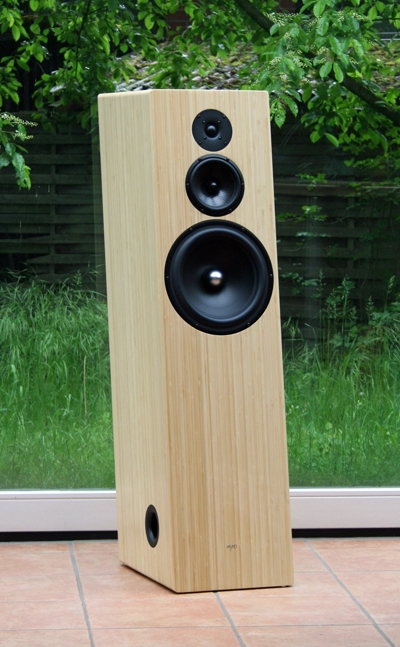Foreword
IntroductionThe time-directed (or impulse-directed or signal-directed) loudspeakers represent only a small niche among all models available on the market. The concern for the most precise possible conversion of the electrical signal should actually be a matter of course in the high end. However, the construction of time-corrected loudspeakers is subject to far more restrictions than other models. In addition, the time-consuming tuning of each individual model is quite expensive and not suitable for mass production. Each loudspeaker is "tuned" individually to achieve the best possible result. Overall, the requirements in the development are many times higher, so that only very few manufacturers go this way. There are four parts of the path of reproduction of sound in relation to the original at hand, or rather, let the original be defined as follows:
Therefore, should we be interested in reproducing sound events, we must strive to innovate and improve quality along the entire path of information. This is inevitably connected with the fact that at each point the respective original information is passed on in as high a quality as possible. |
The Myroklopädie bridges the gap between the natural auditory impressions of humans, the construction of time-correct loudspeakers, the description of the associated measurement technology and finally to the question of how to succeed in recording sound events as authentically as possible. It draws on practical experience in loudspeaker development gained over 25 years and more than 100 models. And it shows ways how the usual problems can be solved by - sometimes even greater - constructive efforts. Complicated theoretical models will be addressed here, but not described in detail. Theoretical modelling with its limitations and simplifications is one of the biggest sources of errors and obstacles developers have to deal with, often without even being aware of it. A development based on a model always contains the errors of this model. Avoiding these errors, however, is an important prerequisite for advancing the perfection of a loudspeaker.
With all this it does not remain finally with the theory, since with the recordings of the Katzenberger music production Examples are available, how far the pursuit of authenticity can really succeed.
"Due to the technocratic ignorance of complex phenomena that are difficult to calculate, and due to a lack of interdisciplinary vocabulary, I continue my search for buzz words and neologisms."
Michael Weidlich
<zurück: Myroklopädie>
<zurück: Myro>
